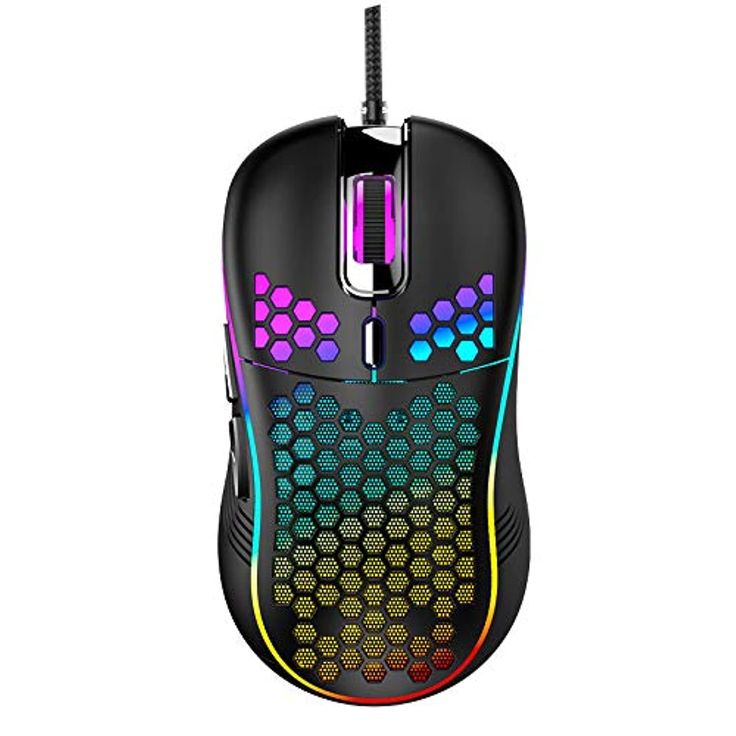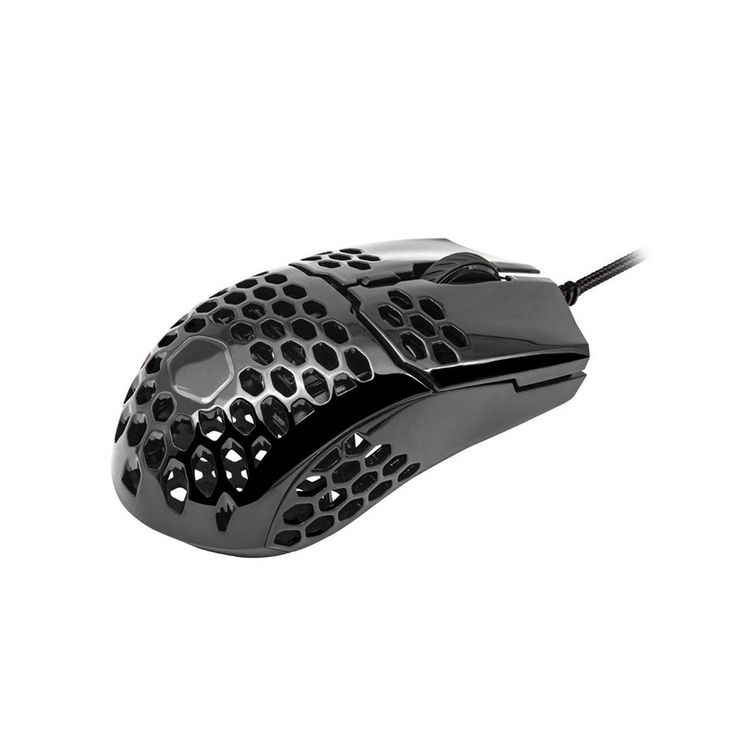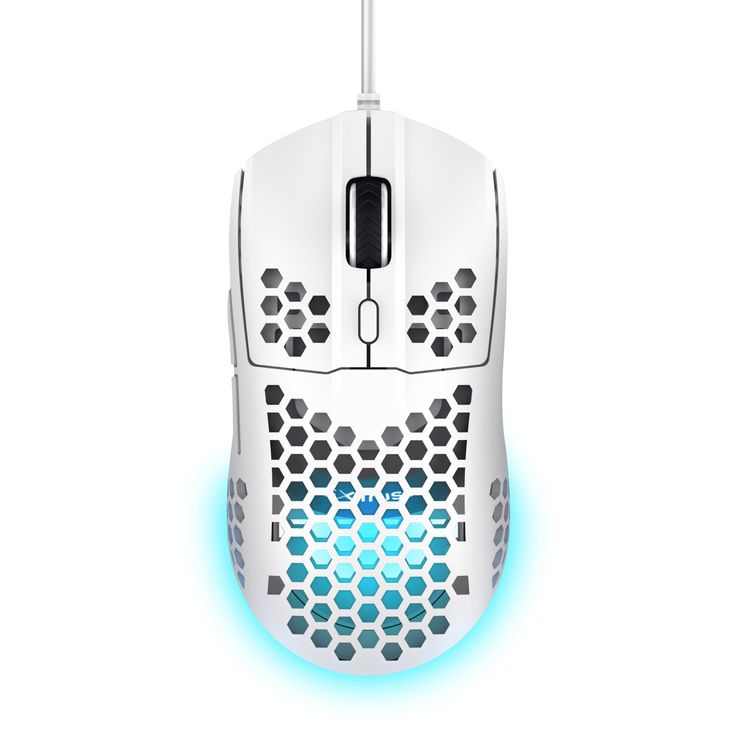In recent years, the honeycomb gaming mouse has become a standout trend among gamers seeking enhanced performance and comfort. The distinctive honeycomb shell design sets it apart from traditional solid-bodied mice. Yet, many still wonder what practical advantages this style brings and which claims about it hold up to scrutiny. This article dives deep into the design benefits and common myths surrounding honeycomb gaming mouse, delivering an insightful, multi-faceted examination that equips gamers with knowledge to make informed gear choices.

The Innovative Honeycomb Design: A Revolution in Mouse Engineering
At the core of the honeycomb gaming mouse lies its unique shell structure, characterized by a lattice-like pattern of hexagonal cutouts. This design replaces the usual solid plastic body with a lightweight, breathable frame. The primary benefit of this approach is substantial weight reduction. By removing unnecessary material without sacrificing structural integrity, manufacturers create a mouse that weighs often less than 60 grams — a stark contrast to the 90–130 grams typical of traditional models. This difference translates directly to faster, more precise movements during intense gaming sessions.
Beyond weight, the honeycomb design also enhances ventilation. The hexagonal holes allow air to circulate freely around the hand, reducing sweat buildup and discomfort. For gamers who endure marathon sessions, this airflow improves grip stability and minimizes slippage caused by moisture. Moreover, the structural geometry distributes pressure evenly across the mouse’s surface, increasing ergonomic comfort. By balancing lightness, breathability, and support, the honeycomb shell revolutionizes how gamers interact physically with their peripherals.
Weight Reduction and Its Impact on Gaming Performance
One of the most celebrated advantages of honeycomb gaming mouse lies in their ultra-lightweight construction. Reducing a mouse’s weight fundamentally changes the dynamics of user input. When the mouse is lighter, players experience less inertia, enabling quicker, more fluid cursor movements with less effort. This responsiveness proves critical in high-precision games such as first-person shooters (FPS), where milliseconds and minute adjustments dictate success or failure.
Heavy mice require more force to accelerate and decelerate, often resulting in fatigue during prolonged use. The honeycomb design combats this by offering a near featherweight alternative that allows for extended gaming without wrist strain. Studies and player testimonials consistently report improved accuracy and reaction time when switching to lighter mice. This evidence suggests that the honeycomb structure is not merely a visual gimmick but a performance-driven innovation deeply impacting gameplay mechanics.
Additionally, this reduction in weight enhances maneuverability on various surfaces, whether cloth or hard mousepads. Players can execute swift flick shots, tracking movements, and precise aiming with reduced resistance, boosting overall control and confidence. Thus, the honeycomb design’s impact on performance extends beyond aesthetics, embedding itself as a core functional advantage.

Ergonomics and Comfort: Debunking the “Fragile” Myth
Critics often claim honeycomb gaming mouse sacrifice durability and comfort for weight savings, arguing that the perforated shell feels fragile or uncomfortable. However, these critiques overlook significant ergonomic advancements incorporated in honeycomb models. Manufacturers engineer the honeycomb structure using reinforced materials such as high-grade plastic composites and specialized polymers. This blend ensures the shell maintains structural strength despite the cutouts.
Moreover, the hexagonal pattern distributes mechanical stress more evenly, preventing weak points and making the mouse surprisingly robust. The open design also enables a better tactile connection between the user’s hand and the mouse surface, enhancing control without discomfort. The ventilated shell reduces heat and sweat buildup, directly improving hand comfort during prolonged sessions.
Ergonomically, honeycomb gaming mouse often feature sculpted shapes tailored to various grip styles—palm, claw, or fingertip—providing a personalized fit. Many models incorporate textured side grips and adjustable weights for further customization. These design choices contradict the misconception that the honeycomb shell compromises comfort or reliability. Instead, they illustrate an intentional balance between lightness, strength, and user-friendly ergonomics.
Dust and Dirt Accumulation: Real Concerns or Overblown Issues?
One of the most common concerns about honeycomb gaming mouse is their exposure to dust and dirt. Critics argue that the open-shell design invites debris to enter the mouse, potentially leading to long-term damage or frequent cleaning. While it’s true that honeycomb shells expose more of the mouse’s interior than a solid-body design, this issue deserves closer inspection rather than alarm.
Most honeycomb mice are built with protective internal housings that shield critical components. The optical sensor, circuitry, and switches are typically enclosed beneath a secondary layer, preventing dust from interfering with performance. This means that although particles may settle on the surface or in the hexagonal holes, they rarely reach the parts that matter most.
For general maintenance, users only need simple tools. A quick blast of compressed air or a swipe with a soft brush is usually enough to remove visible dust or debris. This kind of light upkeep is no more demanding than cleaning a keyboard or monitor. Moreover, some honeycomb models feature detachable shells, allowing for more thorough but easy cleaning when needed.
Manufacturers understand hygiene is a concern, especially for competitive gamers. That’s why many design honeycomb mice with antibacterial coatings or use materials that resist grime buildup. These added protections keep the mouse looking clean and functioning smoothly even after months of use.
In the bigger picture, the advantages of airflow and lighter weight far outweigh this manageable drawback. Gamers benefit from better grip, reduced sweat, and improved comfort. With a small amount of regular care, dust buildup never becomes a serious problem. The myth about dust ruining honeycomb gaming mouse doesn’t match the real-world experience of most users. It’s more of a talking point than a technical flaw.

Sensor and Performance Technology Integration
While the honeycomb shell draws attention, the underlying sensor technology significantly affects gaming mouse performance. Most high-end honeycomb models integrate advanced optical sensors capable of tracking movements with extreme accuracy and minimal latency. These sensors complement the lightweight design, creating a harmonious system optimized for competitive gaming.
Manufacturers frequently pair the honeycomb chassis with premium sensor components such as the PixArt PMW3389 or PMW3360, known for their precision and reliability. These sensors support high DPI settings, adjustable polling rates, and low lift-off distances, critical parameters for professional gamers seeking pixel-perfect control. The open honeycomb shell also allows heat dissipation around the sensor and internal circuitry, contributing to consistent performance stability.
Moreover, many honeycomb gaming mouse include customizable RGB lighting, programmable buttons, and software suites to tailor sensitivity and macros. This integration demonstrates that honeycomb design does not compromise technological sophistication but rather serves as a platform enhancing overall gaming experience through balanced hardware and software synergy.
Impact on Different Gaming Genres and Player Preferences
Understanding how honeycomb gaming mouse perform across various gaming genres helps clarify their suitability for different player styles. FPS gamers often benefit the most due to the necessity for rapid, precise aiming and swift reflexes. The lightweight honeycomb mouse reduces arm fatigue and enables agile movements that improve reaction times and targeting accuracy.
MOBA and RTS players, while less reliant on ultra-fast flick shots, also appreciate the ergonomic comfort and breathability for long play sessions. The customizable buttons and responsive sensor further aid in executing complex command sequences. However, some players who favor heavier mice for better control or preference may find honeycomb mice too light or lacking in tactile feedback.
Casual gamers and productivity users can enjoy the aesthetic appeal and comfort features, though the full benefits may not manifest without demanding use scenarios. Ultimately, personal preference plays a substantial role, but honeycomb gaming mice deliver tangible advantages that make them a competitive choice across multiple gaming disciplines.

Market Evolution and Future Trends in Honeycomb Mouse Design
The honeycomb gaming mouse trend emerged around the late 2010s, pioneered by brands like Glorious PC Gaming Race and Finalmouse. Since then, the design evolved rapidly, spurring innovation in materials, shell geometry, and internal hardware integration. The competitive gaming market embraces the honeycomb style due to its ability to blend ultra-lightweight construction with premium features.
Future developments may include hybrid materials such as carbon fiber composites to enhance durability while reducing weight further. Advances in modular design could allow users to swap out honeycomb panels or customize perforation patterns for optimal grip and airflow. Additionally, integration with wireless technology will improve, with honeycomb shells facilitating better battery management and heat dissipation.
As esports grows, manufacturers will continue refining honeycomb gaming mice, focusing on balancing durability, ergonomics, sensor precision, and aesthetics. This evolution promises to expand accessibility to high-performance, lightweight peripherals for a broader range of gamers, pushing the boundaries of competitive advantage.

In summary, the honeycomb gaming mouse offers clear design benefits rooted in weight reduction, ergonomic comfort, and airflow improvement. Many myths—such as fragility and dust-related maintenance issues—do not withstand technical scrutiny and practical user experience. When paired with cutting-edge sensor technology, the honeycomb design creates an advanced gaming tool that elevates performance across multiple genres. As the market innovates, honeycomb mice will remain a critical component in the evolution of gaming peripherals, challenging traditional conventions and delivering genuine competitive edge.